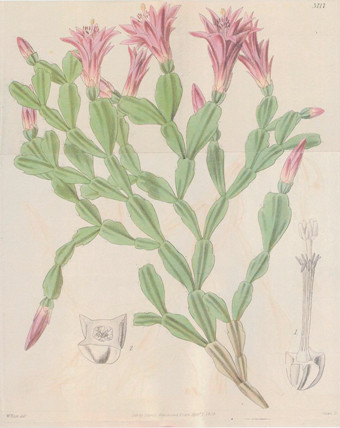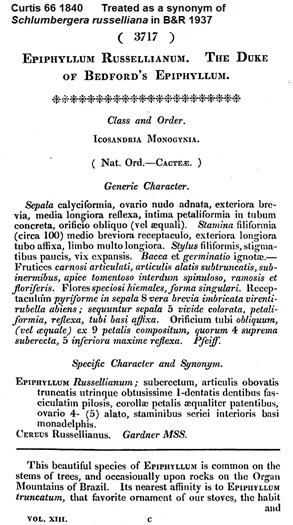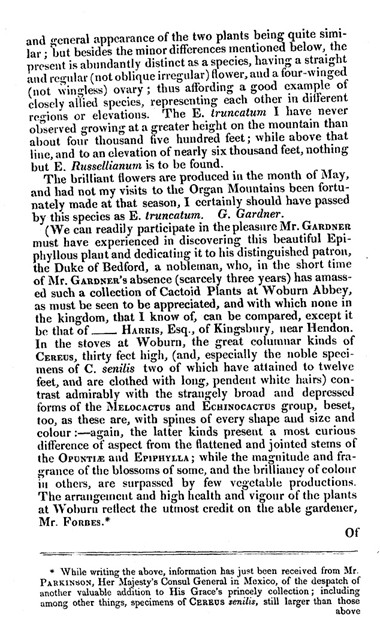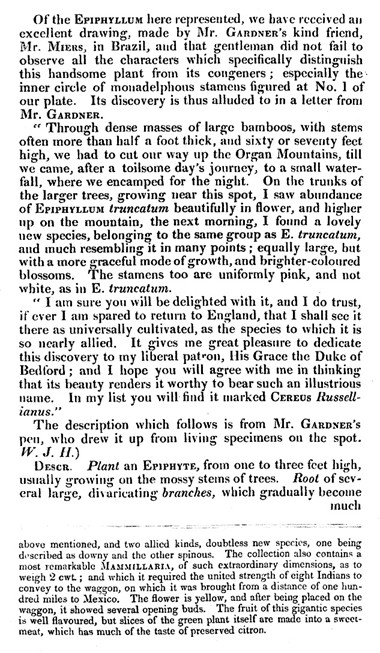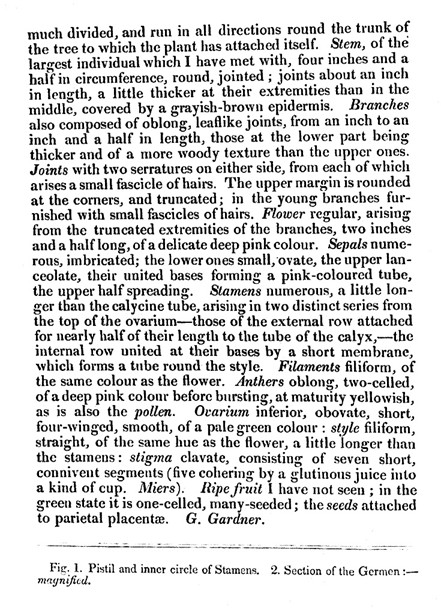| Schlumbergera
russelliana (Hooker)
Britton and Rose, Contr. Desc from B&R 1923 Plant
- epiphytic, growing on trees, rocks, or in humus, often found in dark
crevices, 1 to 3 dm. long,
either hanging or erect, much branched, divided into short joints; Type locality: Organ Mountains, Brazil.. This plant was introduced into England in 1839. It was named by G. Gardner for the Duke of Bedford, who had sent him to Brazil to collect plants. The Duke of Bedford brought together at Woburn Abbey a very large and choice collection of cacti which became one of the finest in England. His gardener, Mr. James A. Forbes, published a catalogue of this collection in 1837. DISTRIBUTION. Brazil (Rio de Janeiro): Serra dos Orgaos, epiphytic and epilithic in cloud forest, at 1350-2200 m altitude.
|
|
